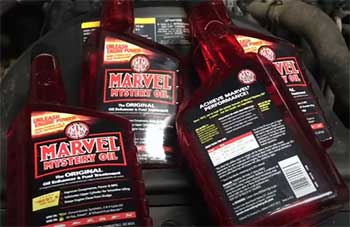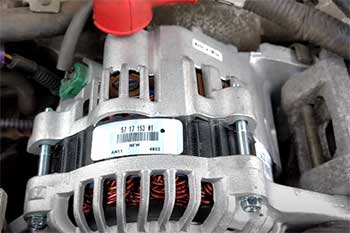Listen up, car enthusiasts—if you’re itching to upgrade your ride’s suspension without emptying your wallet, BFO coilovers are calling your name. I’ve been down the rabbit hole of suspension mods, and trust me, these bad boys strike a killer balance between price, performance, and adjustability.
Whether you’re chasing a slammed stance or just want better handling on your daily commute, BFO coilovers deliver without the sticker shock of high-end brands. Stick with me through this review—I’m spilling all the tea from my own experience, the good, the bad, and the maintenance tricks you’ll need.
My Journey With BFO Coilovers
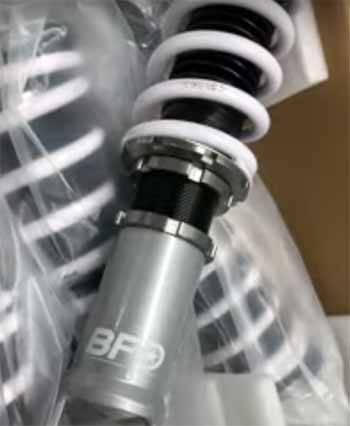
Let me take you back to last summer when I decided my beat-up Civic deserved a glow-up.
The stock suspension was mushy, and every pothole felt like a personal attack.
I’d been eyeing coilovers for a while, but brands like BC Racing or KW were way out of my budget—$1,000+?
No thanks.
Then I stumbled across BFO coilovers online, priced at a jaw-dropping $275 for a full set.
I was skeptical—cheap usually means junk, right? But the reviews were decent, and I figured, “What’s the worst that can happen?
I’ll return them if they suck.”
They arrived in a beat-up box, and I’ll admit, my first impression wasn’t great.
The packaging screamed “budget,” and the instructions were basically a cryptic haiku. But I roped my buddy Jake into helping me install them—he’s the wrench-turning genius I’m not.
We spent a sweaty Saturday afternoon in my garage, cursing at rusty bolts and wrestling the old shocks off. The BFOs slid into place surprisingly well, no weird fitment issues, which was a relief for my ’98 Civic.
The first drive? Holy crap, it was a game-changer. I dropped the ride height about 2 inches—nothing crazy, just enough to ditch that stock 4×4 vibe. The handling sharpened up instantly; corners felt less like a suggestion and more like a command. I could tweak the height with the included spanner wrench, and while it wasn’t butter-smooth to adjust, it got the job done.
Over the next few months, I pushed them hard—daily drives, a few twisty backroad runs, even a sketchy gravel detour. They held up better than I expected, though I started noticing some quirks (more on that later). For the price, though?
I was hooked. It’s not a perfect love story, but it’s real, and I’m here to break it all down for you.
Pros of BFO Coilovers: What I’m Loving?
Alright, let’s talk about why I’m still grinning ear-to-ear about these coilovers. They’ve got some serious perks that make them a steal for the cash.
- Wallet-Friendly Price Tag
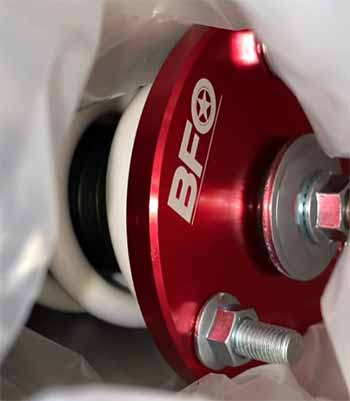
First off, the price is insane.
I paid $275, and even now, you can snag a set for under $300 depending on your car.
Compare that to BC Racing’s $1,000 baseline or Tein’s premium kits pushing $1,500—it’s a no-brainer.
For me, a broke college grad with a car obsession, that savings meant I could still afford gas and ramen.
You’re getting a full coilover setup—shocks, springs, mounts—for less than some brands charge for just a pair of dampers.
It’s budget brilliance.
- Solid Adjustability for the Price
I was shocked at how much control I had with these. You can lower your ride anywhere from 1 to 3 inches, which gave me flexibility to find that sweet spot between stance and practicality. The spanner wrench isn’t fancy, but it works—twist, tweak, done.
Some models even come with adjustable dampers, though mine didn’t. Still, for basic height tuning, it’s more than enough to play with. I set mine at 2 inches lower, and it’s been a vibe ever since.
- Decent Handling Boost
Here’s where I geeked out: the handling improvement. My Civic used to lean like a drunk uncle in corners, but with the BFOs, it’s planted. The springs are stiffer than stock—tested under 600,000 cycles with minimal distortion, according to the specs—and it shows.
I took it through some winding roads near my place, and the body roll was slashed. It’s not race-car crisp, but for a daily driver with occasional spirited runs, it’s a massive upgrade.
- Durability That Surprises
I’ll be honest—I expected these to fall apart after a month. But six months in, they’re still kicking. The steel shock bodies have a surface treatment that’s held up against Midwest winters—rust is there, but it’s not a dealbreaker yet.
I’ve driven over potholes, speed bumps, and even a gravel road when my GPS betrayed me, and they haven’t grenaded. For a budget coilover, that’s a win in my book.
- Looks That Turn Heads
Let’s not kid ourselves—part of this game is aesthetics. Dropping my Civic gave it that aggressive stance I’d been drooling over on Instagram. Even with some visible welds and minor flaws, you can’t tell they’re “cheap” from a distance.
My friends keep asking what I spent, and their jaws drop when I say $275. It’s a flex without the financial regret.
Cons of BFO Coilovers: The Stuff That Bugs Me
Nothing’s perfect, right? BFO coilovers have their flaws, and I’ve run into a few headaches that you should know about before jumping in.
- Installation Can Be a Pain
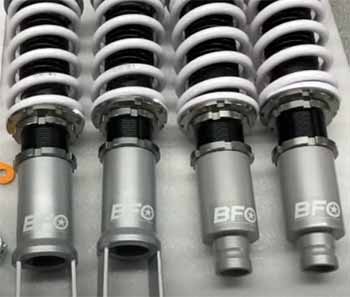
Installing these wasn’t a picnic.
The lack of clear instructions left me and Jake guessing half the time—think IKEA furniture vibes, but for car parts.
If you’re not handy with a wrench or don’t have a patient friend, you might need a pro, which adds cost.
My old bolts were seized, and fitting the rear shocks took some creative swearing.
It’s doable, but it’s not plug-and-play.
- Ride Quality Takes a Hit
Here’s the trade-off: they’re stiff. Like, “feel every crack in the road” stiff. My girlfriend complains about it on longer drives, and I can’t blame her—it’s harsher than stock by a mile.
If you’re after comfort, these might not be your jam. I’ve gotten used to it, but speed bumps are my mortal enemy now. It’s the price of performance on a budget.
- Rust Creeps In Fast
Living in the Midwest, rust is my nemesis, and these coilovers aren’t immune. The threaded shock bodies started showing orange speckles after one winter. I hit them with WD-40 weekly, but it’s a losing battle.
If you’re in a dry climate, you might dodge this, but for me, it’s a constant worry. Will they seize up next season? Time will tell.
- Limited Adjustability Options
While the height tweak is cool, that’s where the fun ends for my set. No damper adjustment means I’m stuck with one firmness level—take it or leave it. Higher-end BFO kits offer more, but mine are basic.
Compared to brands with 30-way damping or camber plates, I’m missing out on fine-tuning. It’s functional, but not fancy.
- Questionable Longevity
Six months is solid, but I’m not betting on these lasting years. The welds aren’t pristine, and the materials feel budget-grade up close. Will they survive another salty winter or a track day? I’m skeptical.
They’re a “right now” fix, not a forever solution, which is fine for my broke self, but it’s a gamble.
Maintenance Tips: Keeping Your BFO Coilovers Alive
Owning coilovers isn’t a set-it-and-forget-it deal—especially budget ones like BFOs. I’ve learned a few tricks to keep them running smooth, and I’m sharing them so you don’t screw yourself later.
- Clean Them Regularly: Road grime is a killer. I grab a cloth and some compressed air every couple weeks to blast dirt off the threads and springs. It’s not glamorous, but it keeps rust and gunk from building up. If you let it sit, adjustments get sticky fast—trust me, I learned that the hard way after a muddy detour.
- Lubricate Like Your Life Depends On It: Rust is my archenemy, so I’m religious about lubing the threads. Silicone spray or white lithium grease works wonders—hit the adjustable collars and any moving parts. I do it monthly, especially in winter. It’s saved me from frozen adjustments so far, and it’s cheap insurance.
- Stick to Paved Roads: These aren’t off-road champs. I took a gravel shortcut once, and the clunks made me wince. BFOs are built for pavement—highways, city streets, twisty backroads. If you’re a dirt-road warrior, look elsewhere, or you’ll trash them quick.
- Adjust Gradually, Not Drastically: When I first tweaked the height, I went full send and dropped it 3 inches. Big mistake—it threw off the balance, and the ride got sketchy. Now I adjust in small increments, like a quarter-inch at a time, and test-drive after. It’s safer and keeps the suspension happy.
- Check Your Tires Too: Upgrading coilovers without eyeballing your tires is asking for trouble. Mine were worn unevenly from the old setup, and the BFOs made it worse until I swapped them out. Get a pro to check alignment and tire wear after install—it’s worth the $50 to avoid bigger headaches.
BFO Coilovers Vs. The Big Boys: A Showdown
Alright, let’s put BFO coilovers in the ring with some other players—MaXpeedingRods, TEIN Flex Z, and Rev9. I’ve ridden shotgun in cars with these setups and poked around forums to see how they stack up. No fluff, just real talk on how BFO holds its own against these contenders.
- BFO Coilovers Vs. MaXpeedingRods Coilovers
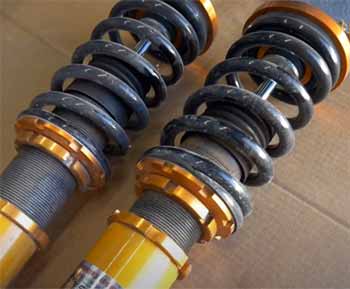
MaXpeedingRods coilovers hover around $300-$400, so they’re in BFO’s budget ballpark.
I’ve got a friend with their kit on his Mazda 3, and it’s a close call.
BFO edges out slightly on price—my $275 set was cheaper than his $320 deal.
Both offer height adjustability, but MaXpeedingRods throws in 24-way damping on some models, which my basic BFOs lack.
Ride-wise, his feels a tad smoother over bumps, but I’ve got him beat on raw handling sharpness—my Civic corners like it’s glued down.
Build quality?
Neck and neck—both show rust after a wet winter, though his welds look cleaner. For the extra $50, MaXpeedingRods gives you more tuning options, but BFO’s simplicity keeps it a steal for basic needs.
- BFO Coilovers Vs. TEIN Flex Z Coilovers

TEIN Flex Z is a step up, running $800-$1,000, and it shows. I rode in a buddy’s Subaru with these, and the difference is stark. TEIN’s got 16-way damping and a twin-tube design that smooths out potholes way better than my BFOs—my teeth don’t chatter on rough roads like they do now.
Adjustability is tighter too; TEIN’s spanner turns like butter, while my BFO wrench fights me. Durability-wise, TEIN’s Japanese engineering laughs at rust, while my BFOs are already speckled orange.
Price is the kicker—BFO’s $275 vs. TEIN’s $900. If you’ve got cash to burn and crave comfort with control, TEIN wins. Me? I’m happy saving $600 and living with the stiffness.
- BFO Coilovers Vs. Rev9 Coilovers
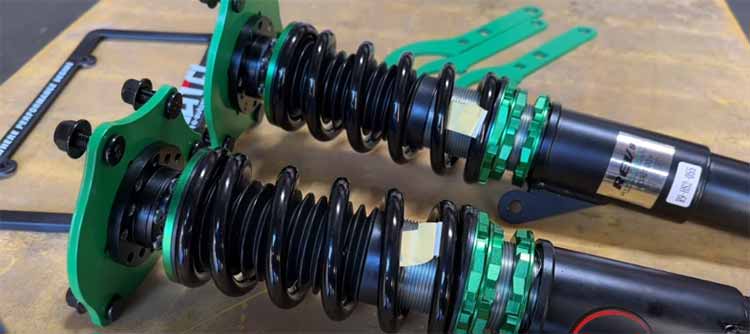
Rev9 coilovers, priced at $450-$600, sit in the middle ground. A guy at my car meet runs them on his GTI, and I’ve felt the difference firsthand. Rev9 offers 32-way damping and camber plates on some kits—stuff my BFOs can only dream of.
His ride is firm but less jarring than mine; I hit a speed bump and wince, he just shrugs. Installation sounded easier too—better instructions, less swearing. But here’s the rub: BFO’s $275 price tag undercuts Rev9 by $200+, and for basic drop-and-drive needs, I’m not missing much.
Rev9’s build feels sturdier—less rust after a year—but BFO’s held up fine for six months. If you want finesse and longevity, Rev9’s worth the splurge; I’m cool keeping it cheap and functional.
Frequently Asked Questions (FAQ)
Got questions? I’ve got answers based on my experience and some digging.
Yeah, they’re solid for daily use. My buddy swears by his BC BRs—adjustable damping means he can soften them for commutes and stiffen up for fun. They’re pricier than BFOs, but the ride’s smoother and more versatile. If comfort’s your priority over budget, BC’s a step up.
BFO doesn’t scream about warranties, but from what I’ve seen, it’s usually a one-year deal against manufacturing defects. Mine came with a vague “contact us” note—nothing fancy. Check with your seller, though; some eBay listings stretch it to two years. Either way, don’t expect lifetime coverage.
BC BRs can go 5-7 years with proper care—my friend’s on year three with no issues. They’re built tougher than BFOs, with better corrosion resistance and rebuild options. Salt and neglect will cut that short, but they’re a long-haul investment compared to my budget set.
They’re stiffer than stock—my BFOs rattle my teeth on bad roads. Installation’s a hassle if you’re not handy, and rust can creep in (looking at you, Midwest). Plus, they wear tires faster if alignment’s off. You trade comfort for performance—it’s the coilover life.
Wrap-Up: Why BFO Coilovers Are Worth It?
So, should you buy BFO coilovers? Hell yeah, if you’re like me—cash-strapped but craving a suspension upgrade. They’ve transformed my Civic for peanuts, delivering killer stance and handling without breaking the bank.
Sure, they’ve got quirks, but for $275, I’m not complaining. Get them, tweak them, maintain them—you’ll love the ride. Trust me, your car’s begging for it.
